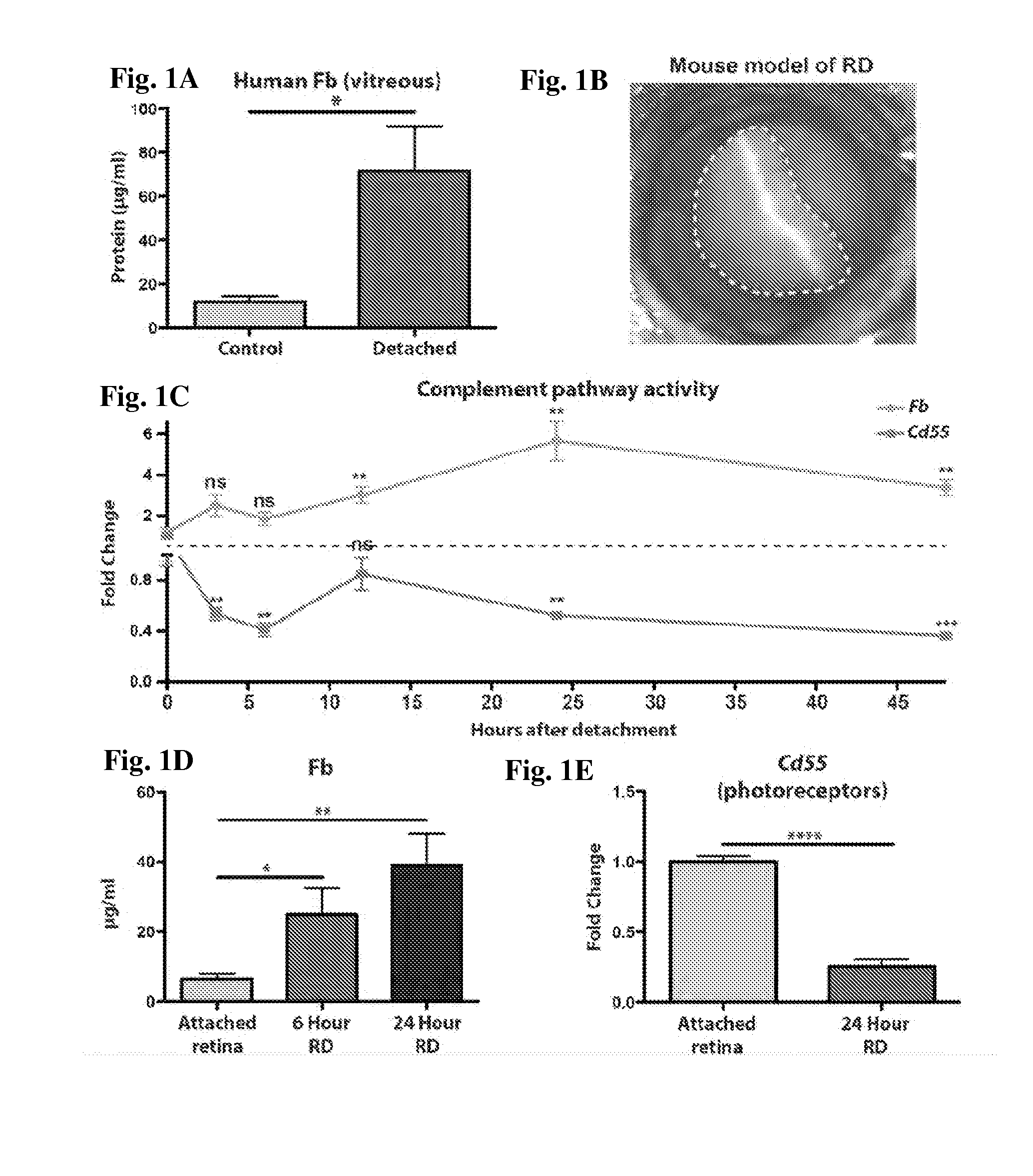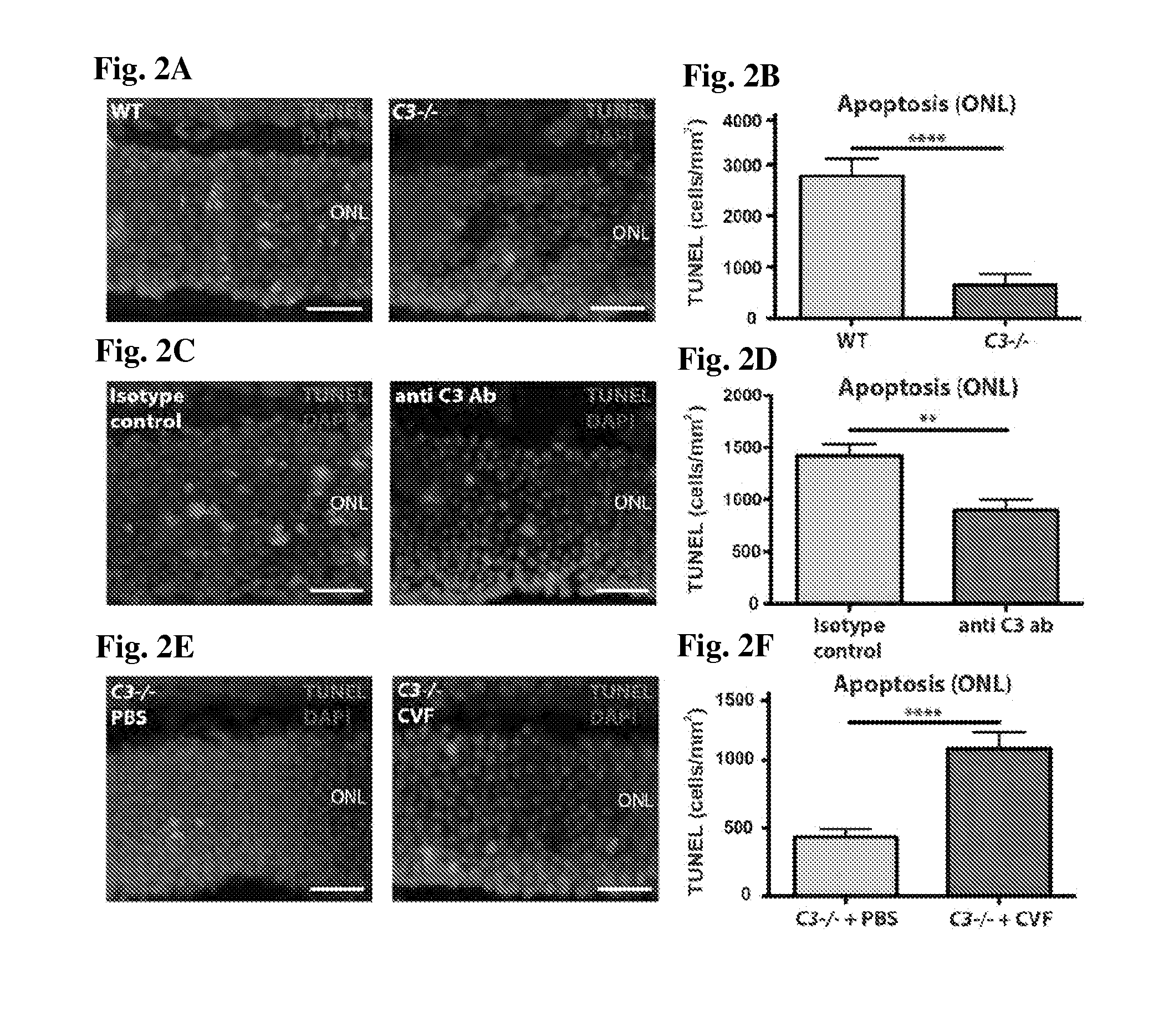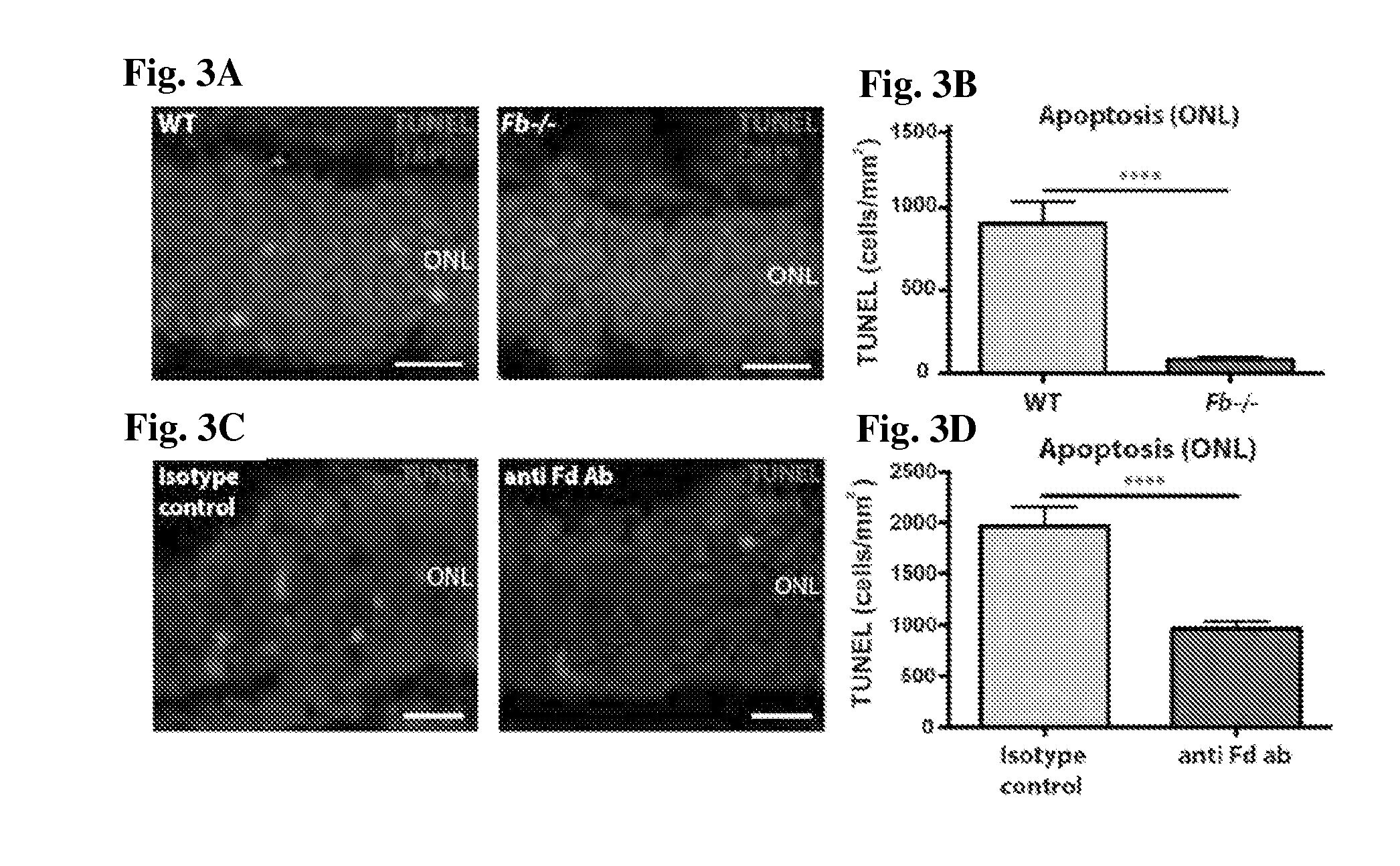Methods of Preventing or Reducing Photoreceptor Cell Death
- Summary
- Abstract
- Description
- Claims
- Application Information
AI Technical Summary
Benefits of technology
Problems solved by technology
Method used
Image
Examples
example 1
Model of Retinal Detachment
[0121]Animal models of retinal detachment (RD) provide an understanding of the cellular mechanisms that facilitate photoreceptor cell death (Lewis G. P. et al., Eye (Lond), 2002). A mouse model of RD was utilized that provides a systematic and controlled system and allows the advantage of the genetic manipulation possible in mice (Matsumoto, H. et al., J Vis Exp, 2013, (79)). Briefly, RD was created in the right eye of adult mice (8-12 weeks), as previously reported (Hisatomi, T. et al., Am J Pathol, 2001, 158:1271-1278), with minor modification. Briefly, mice were anesthetized using a mixture of ketamine (80 mg / kg) and xylazine (8 mg / kg). Deep anesthesia was confirmed by a toe pinch test. One drop of proparacaine hydrochloride (0.5%) (Akorn, 17478-263-12) was administered to each eye. A self-sealing scleral incision was made using a 30 G needle. Next, an anterior chamber puncture was performed from the cornea to reduce intraocular pressure. A 33 G needle ...
example 2
Isolation of the ONL Using Laser Capture Micro-Dissection
[0122]Eyes were enucleated 24 hours post RD then placed in OCT compound (Tissue Tek, 4583, Torrance, Calif.), and quickly frozen by submerging in a beaker of isopropanol chilled by dry ice. Between 16 and 18 sections cut at 30 μm were placed onto a frame slide (leica 11505190, Germany) under RNAse free conditions then allowed to air dry for 10 minutes. All reagents were made using nuclease free water (Ambion, AM9932, Carlsbad, Calif.). The sections on the frame slides were fixed using a graded series of EtOH (Sigma, 459836-1L, St. Louis, Mo.) consisting of incubation in 50% EtOH for 1 minute, 75% EtOH for 1.5 minutes, and water for 1 minute. To identify the cell layers the slides were dipped in 0.1% toluidine blue solution (Fluka, 89640-5G, St. Louis, Mo.) followed by 2 rinses in water for 15 seconds each, 75% EtOH for 30 seconds, and water for 15 seconds. Sections were dried in room air then the photoreceptors were isolated u...
example 3
Alternative Complement Pathway in RD
[0123]Increased activity of the alternative complement pathway was correlated with retinal detachment. In this Example, gene expression and protein levels of alternative complement pathway components were assessed in the mouse model of RD.
[0124]To define the role of alternative complement pathway in RD a mouse model that allowed for the genetic manipulation possible in mice was utilized (Matsumoto, et al. J Vis Exp. 2013). In this model a sustained RD is created by a sub-retinal injection of sodium hylaluronate (Provise), resulting in approximately 60% of the retina becoming detached (FIG. 1B) (Matsumoto, et al. J Vis Exp, 2013). Photoreceptor apoptosis is assessed from 12-72 hours post detachment by identifying TUNEL positive cells in the outer nuclear layer (ONL) (FIGS. 7A-D). The peak amount of cell death occurs at 24 hours post-detachment (FIGS. 7C and D). Fb expression in the retinas of mice with or without RD was assessed and found significa...
PUM
| Property | Measurement | Unit |
|---|---|---|
| Time | aaaaa | aaaaa |
| Time | aaaaa | aaaaa |
| Time | aaaaa | aaaaa |
Abstract
Description
Claims
Application Information
 Login to View More
Login to View More - R&D
- Intellectual Property
- Life Sciences
- Materials
- Tech Scout
- Unparalleled Data Quality
- Higher Quality Content
- 60% Fewer Hallucinations
Browse by: Latest US Patents, China's latest patents, Technical Efficacy Thesaurus, Application Domain, Technology Topic, Popular Technical Reports.
© 2025 PatSnap. All rights reserved.Legal|Privacy policy|Modern Slavery Act Transparency Statement|Sitemap|About US| Contact US: help@patsnap.com



